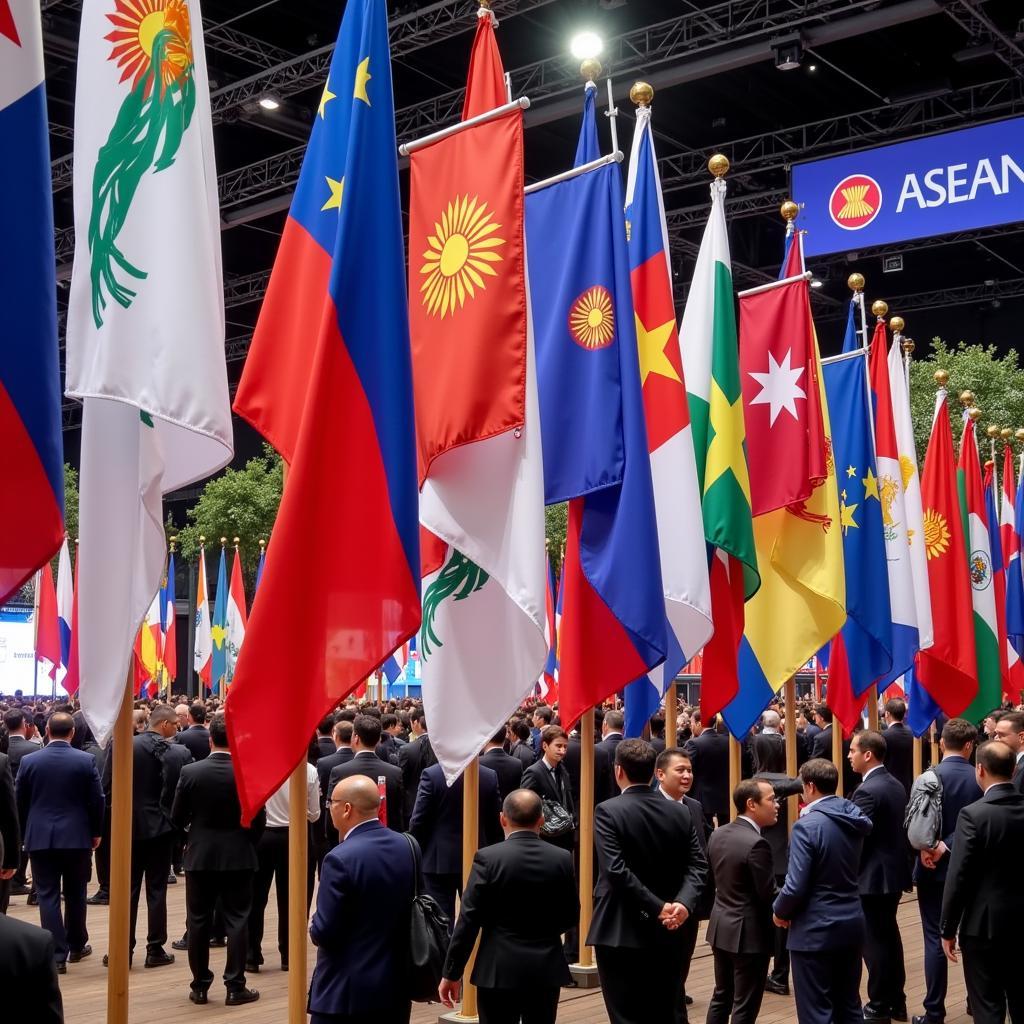Southeast Asia, a region known for its cultural tapestry and vibrant economies, is home to the Association of Southeast Asian Nations (ASEAN). This influential bloc, comprised of ten member states, plays a pivotal role in fostering regional cooperation and development. Often, people search for “Anggota Ke 10 Asean” to understand the history and significance of the tenth member’s inclusion.
A Closer Look at ASEAN Membership
ASEAN’s journey began in 1967 with five founding members: Indonesia, Malaysia, the Philippines, Singapore, and Thailand. The organization expanded over the years, welcoming Brunei Darussalam in 1984, Vietnam in 1995, Laos and Myanmar in 1997, and finally, Cambodia in 1999. The inclusion of Cambodia, making it the “anggota ke 10 asean”, marked a significant milestone, solidifying ASEAN’s vision of encompassing all Southeast Asian nations under one umbrella.
The Significance of Cambodia’s Accession
Cambodia’s entry into ASEAN in 1999 was more than just a symbolic gesture. It signified:
- Regional Unity: It completed the vision of a united Southeast Asia, fostering greater political and economic cooperation.
- Stability and Peace: After decades of conflict, Cambodia’s inclusion symbolized a commitment to peace and stability in the region.
- Economic Integration: It opened avenues for Cambodia to participate in regional trade agreements and benefit from economic partnerships.
The Impact of Having 10 Members of ASEAN Integration
The expansion to 10 members of ASEAN integration has yielded numerous benefits:
- Enhanced Market Access: The combined market of over 650 million people makes ASEAN an attractive destination for foreign investment.
- Political Dialogue and Cooperation: The platform allows member states to engage in dialogue and find peaceful resolutions to regional issues.
- Cultural Exchange: ASEAN encourages cultural exchange programs, promoting understanding and appreciation of the region’s diversity.
What Does the Future Hold for ASEAN?
As a unified bloc of 10 members, ASEAN stands at a crucial juncture. The organization faces challenges such as:
- Navigating Geopolitical Tensions: Maintaining neutrality amidst power struggles in the region.
- Bridging the Development Gap: Addressing economic disparities among member states.
- Strengthening ASEAN Identity: Fostering a stronger sense of community and shared purpose.
Conclusion: Embracing a Shared Future
The inclusion of Cambodia as the “anggota ke 10 asean” marked the culmination of ASEAN’s vision for a united Southeast Asia. The journey towards greater integration and shared prosperity continues, with ASEAN striving to overcome challenges and harness opportunities for the benefit of its people. Understanding ASEAN’s evolution, particularly the inclusion of its tenth member, offers a glimpse into the complex dynamics and aspirations of this vital region.
